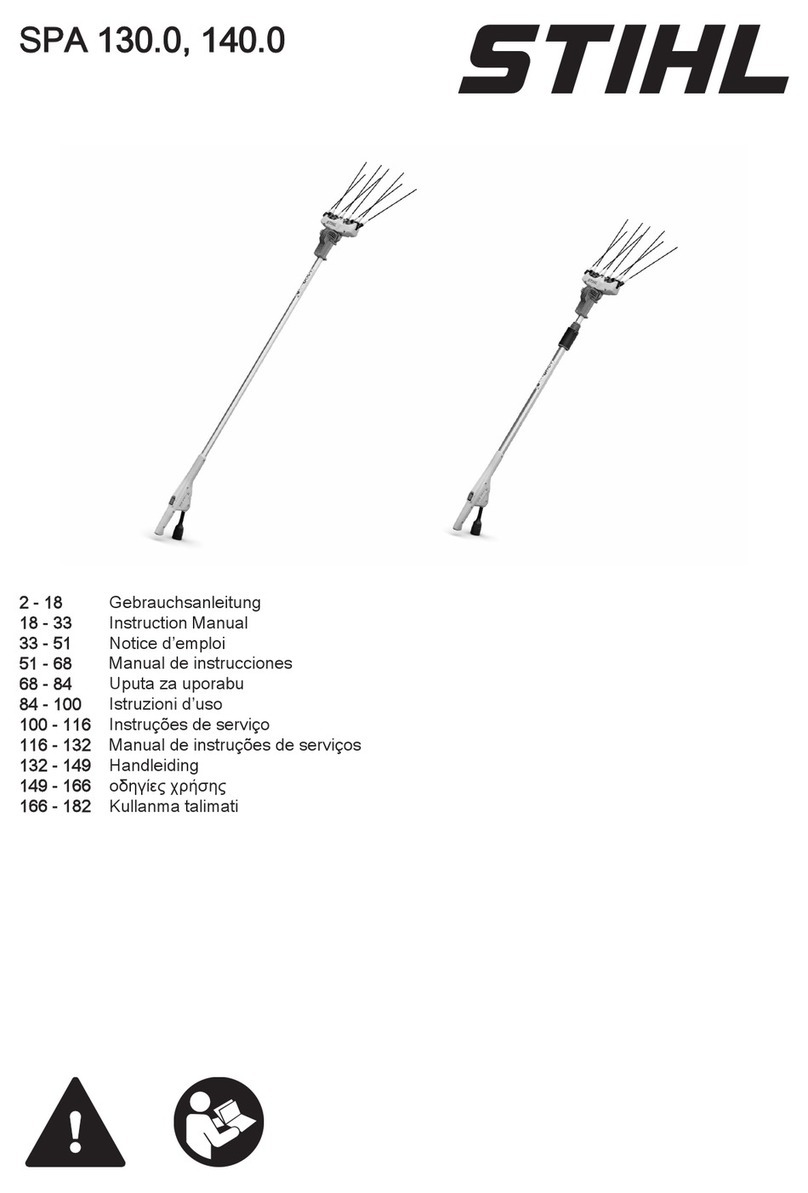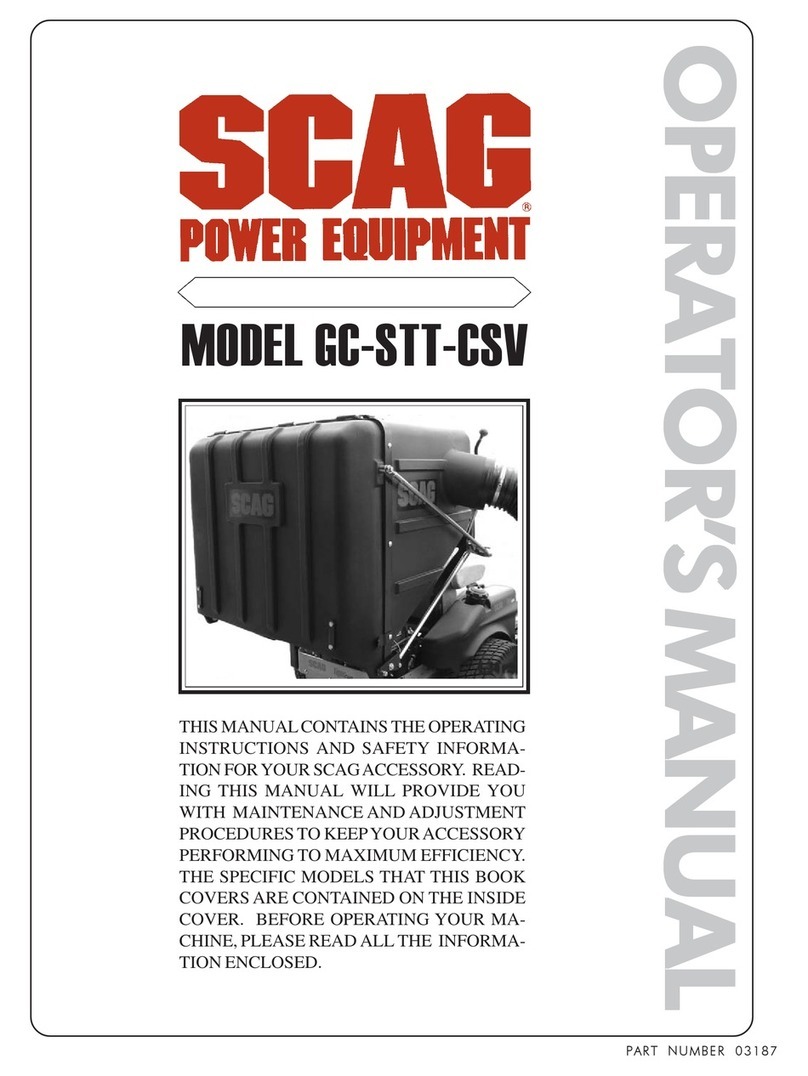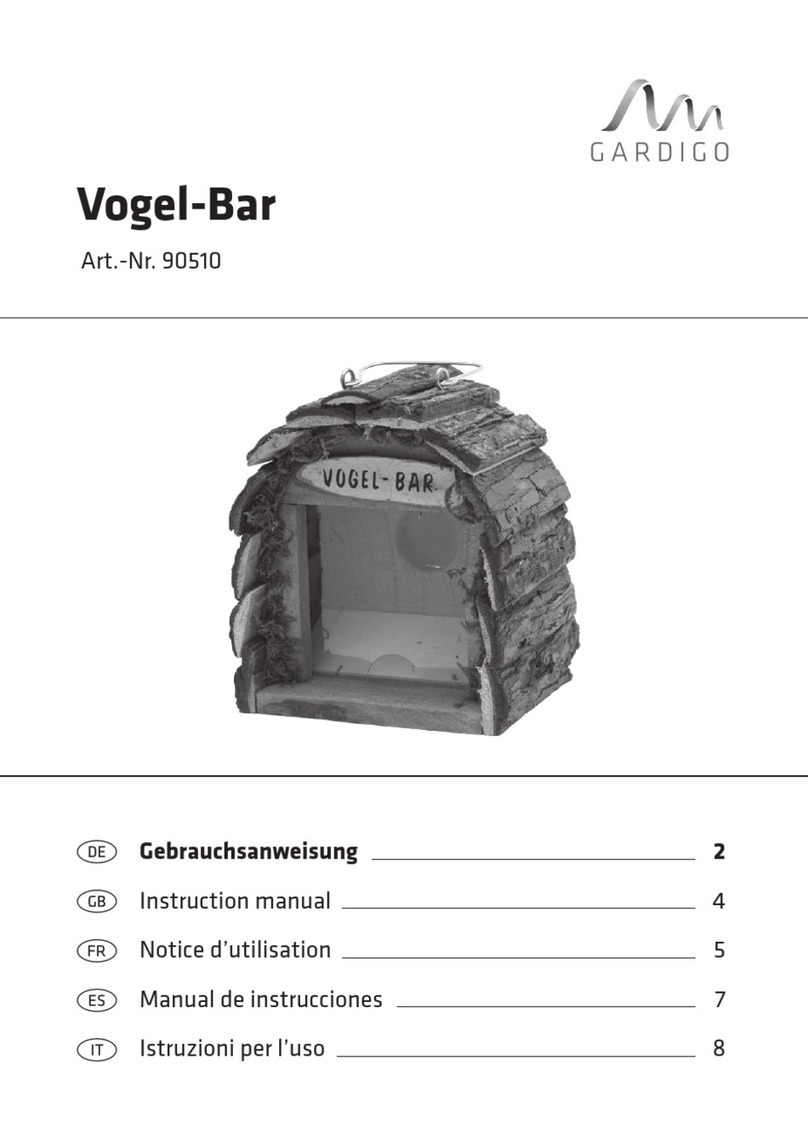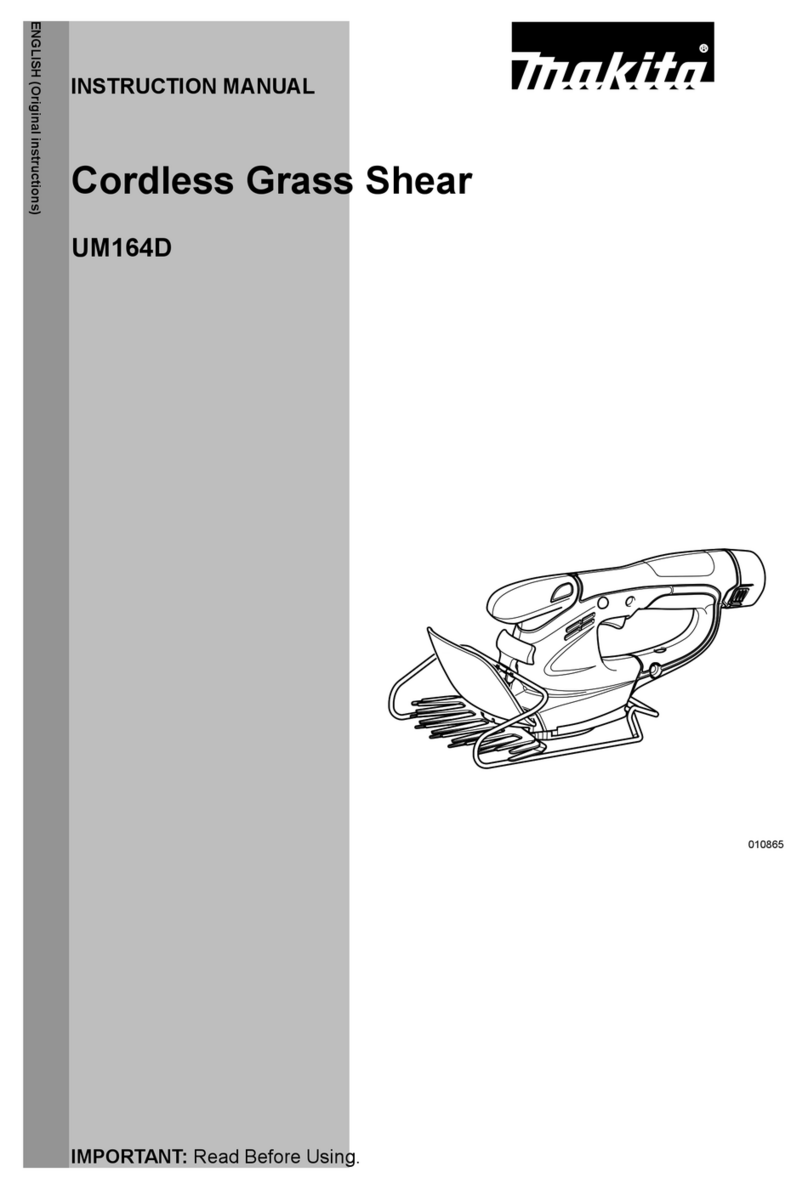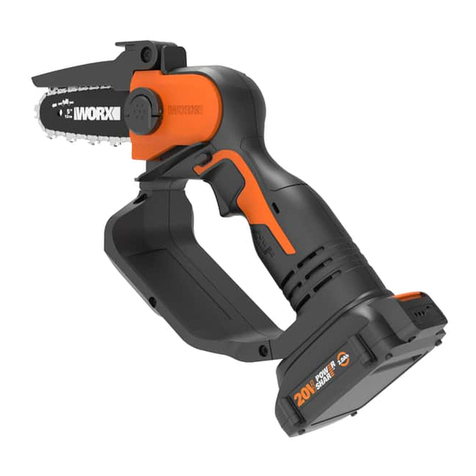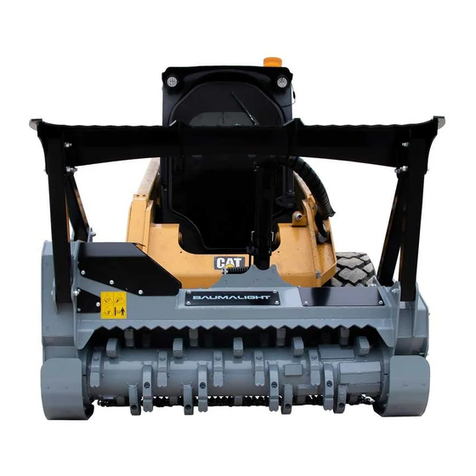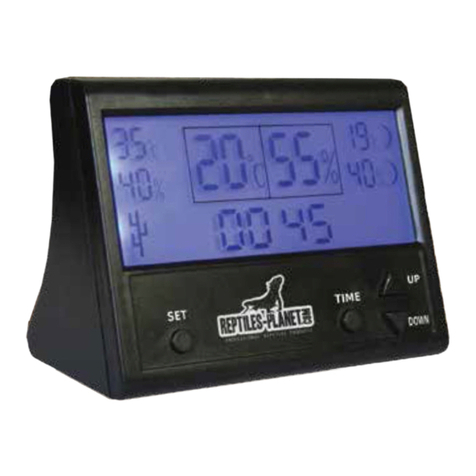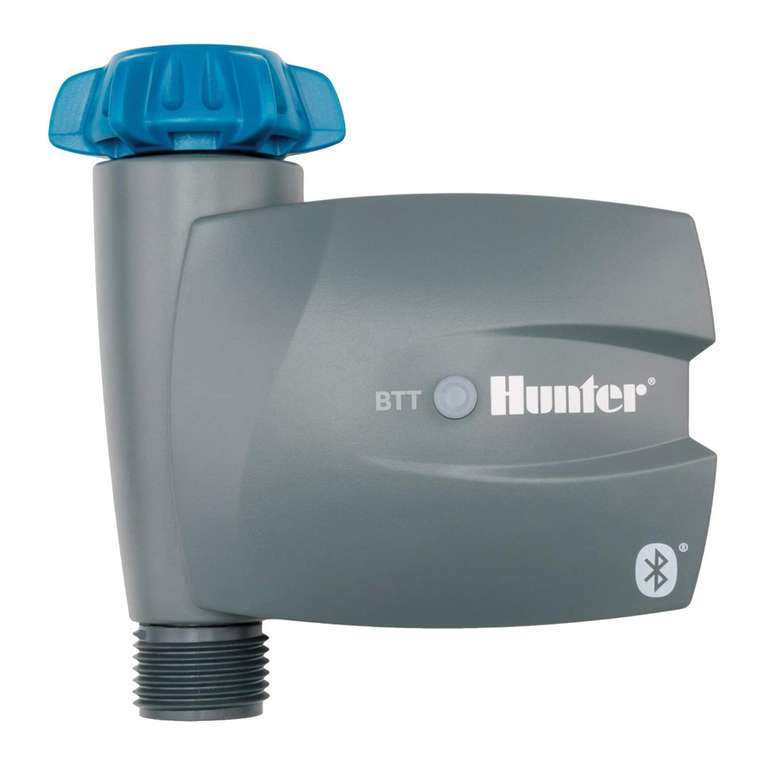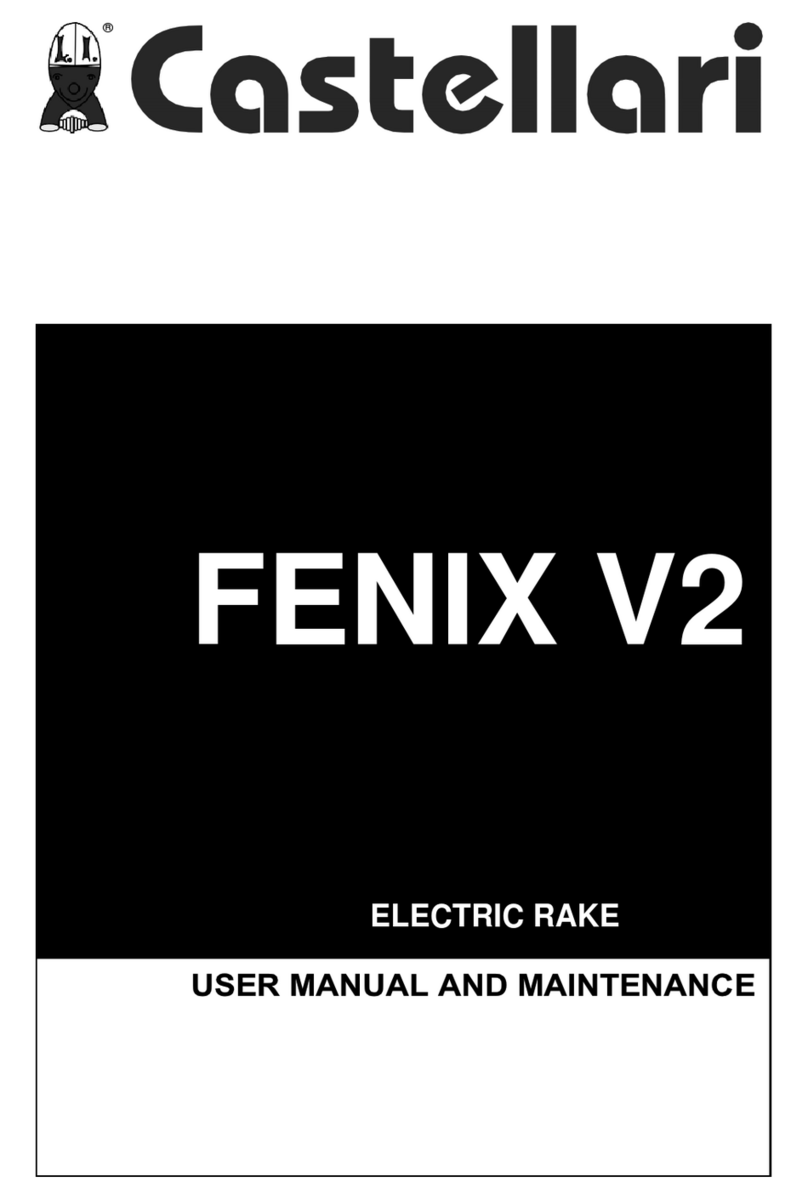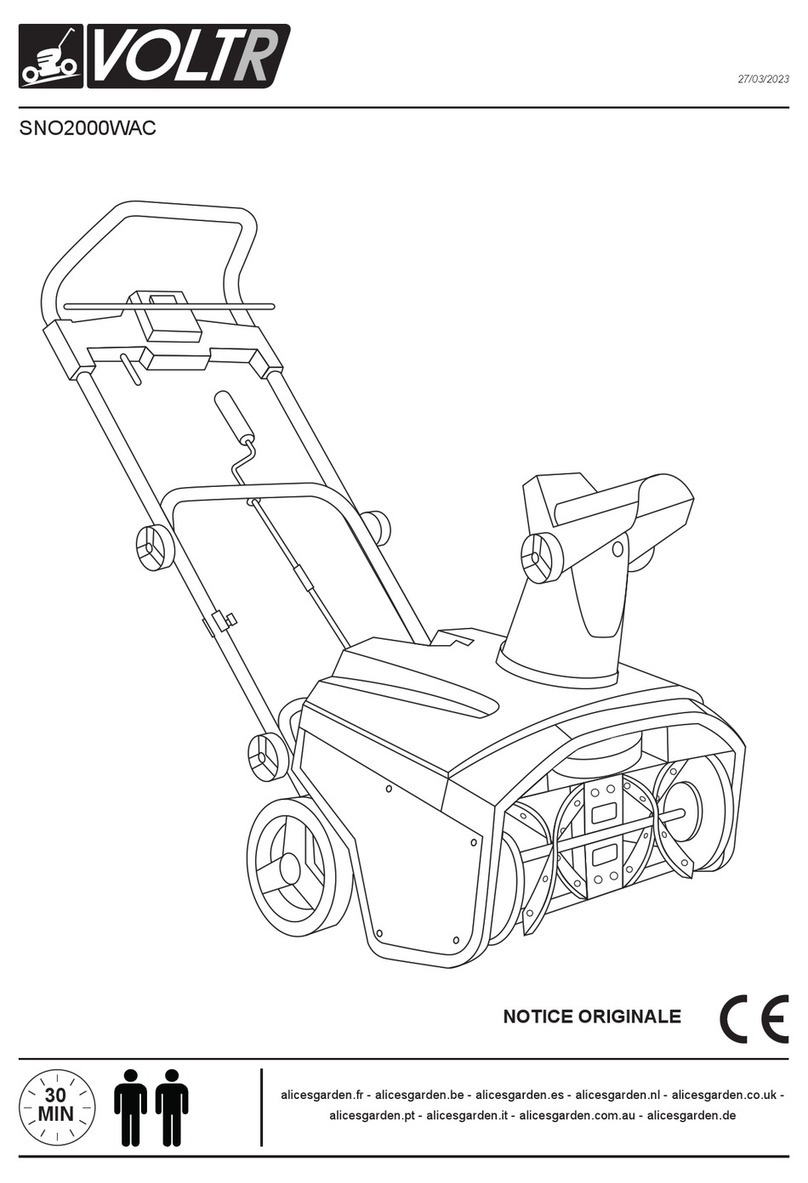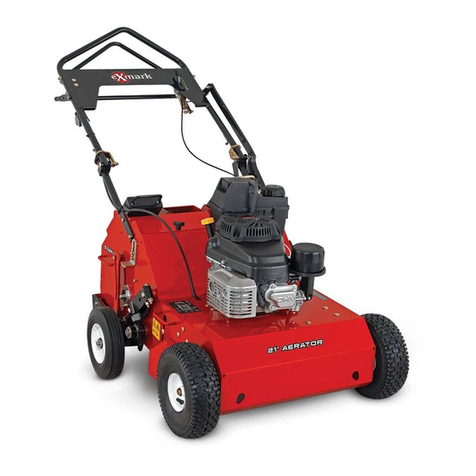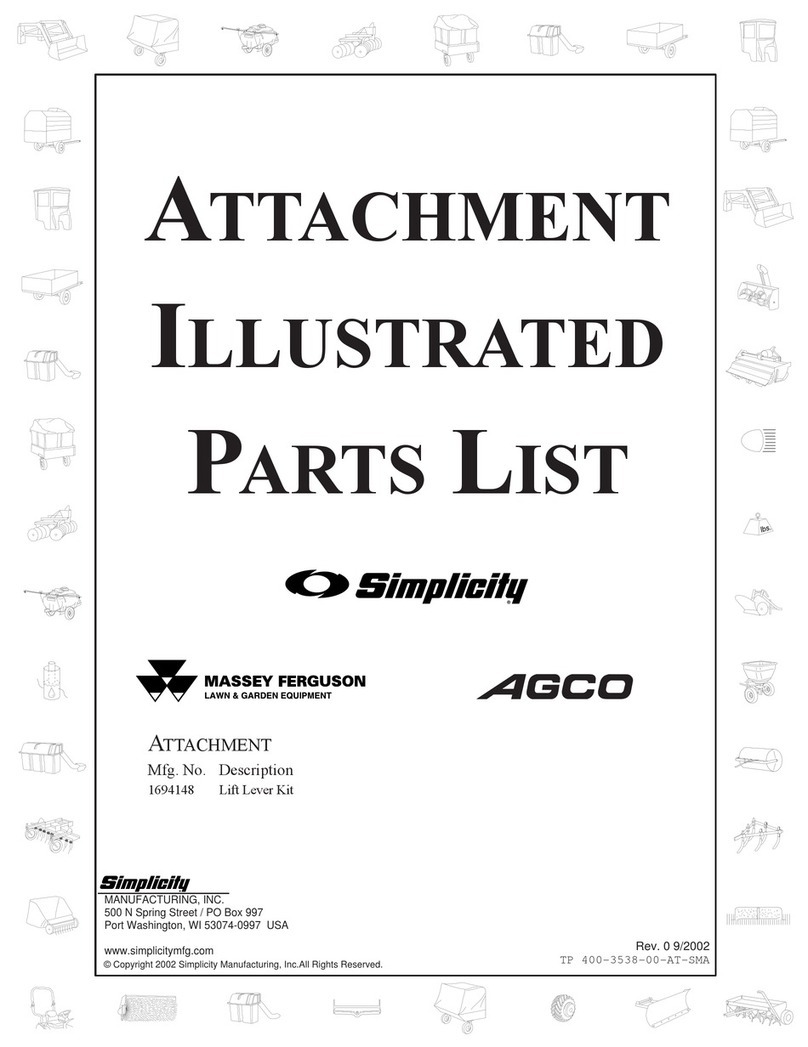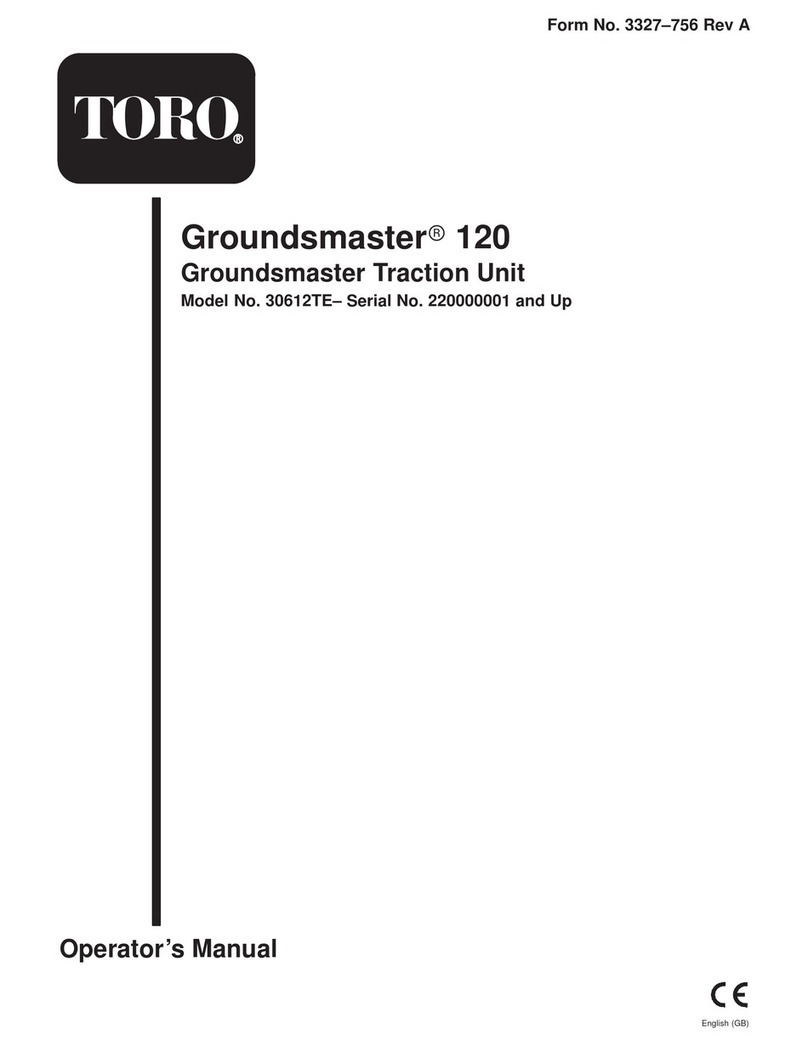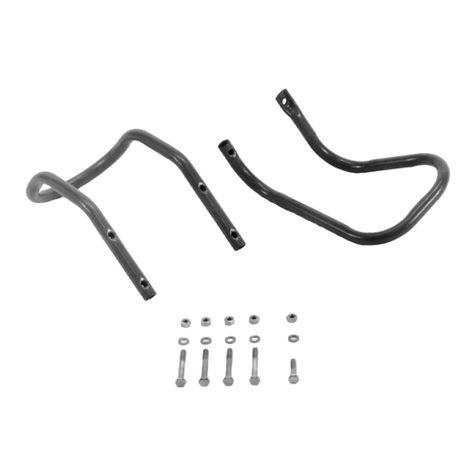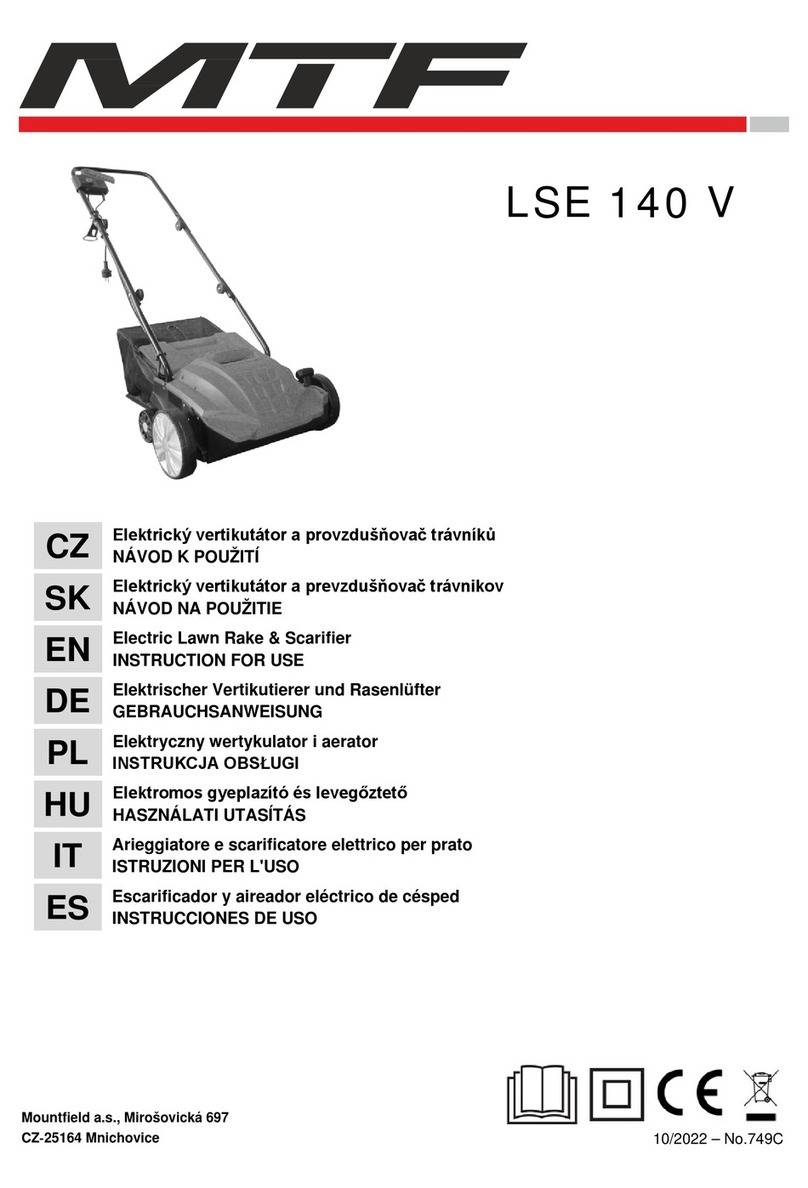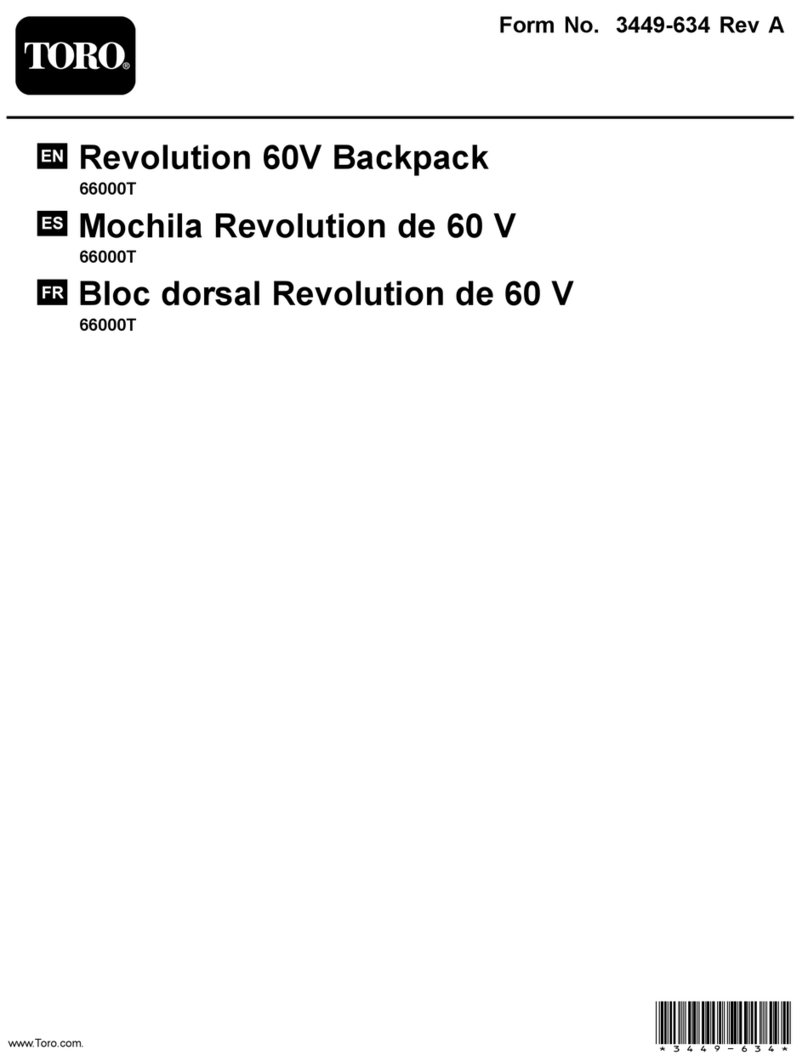Rogers WG6 User manual

Rogers Sprayers Inc. Toll Free 1-888-975-8294 www.rogerssprayers.com
Phone: (306) 975-0500
Fax: (306) 975-0499
Web: www.rogerssprayers.com
141 - 105th Street East
Saskatoon, SK S7N 1Z2
Canada
R o g e r s S p r a y e r s I n c .
WG6 Windfoil Greensap
6-ft Covered Hose-fed Sprayer
Assembly, Parts and Operator’s Manual
Version WG-1007

Rogers Sprayers Inc. Toll Free 1-888-975-8294 www.rogerssprayers.com 2
Table of Contents
SAFETY....................................................................................................................................................3
Operational Safety .............................................................................................................................3
GENERAL SPRAYING INFORMATION..................................................................................................3
Application Tips .................................................................................................................................3
Nozzles................................................................................................................................................4
Diaphragm Check Valve Nozzle Bodies...........................................................................................4
Calibration ..........................................................................................................................................4
Application Rate Table, 12” spacing................................................................................................5
GENERAL MAINTENANCE ....................................................................................................................7
Cleaning..............................................................................................................................................7
Sunshine.............................................................................................................................................8
Winterizing..........................................................................................................................................8
ASSEMBLY..............................................................................................................................................8
Front Wheel Installation ....................................................................................................................8
Handle attachment.............................................................................................................................8
Hose attachment ................................................................................................................................8
Last Check..........................................................................................................................................8
OPERATION ............................................................................................................................................9
MAINTENANCE.......................................................................................................................................9
DRAWINGS AND REPLACEMENT PARTS...........................................................................................9
WG Parts Breakdown............................................................................................................... ……10
Plumbing Assembly.........................................................................................................................11
Flowmonitor Assembly....................................................................................................................12
Valve Handle Assembly...................................................................................................................13
Tow Hitch (optional).........................................................................................................................13
CE Declaration of Conformity…………………………………………………………………………….14

Rogers Sprayers Inc. Toll Free 1-888-975-8294 www.rogerssprayers.com 3
Many people die or suffer serious injury in job related accidents every year due to carelessness. Know your machinery
and be aware of potential hazards. Put safety first in all your operations.
Review all instructions and procedures outlined in this manual annually. Every operator must familiarize himself with the
operating instructions of the sprayer.
Operational Safety
Shut down sprayer and power unit and wait for all parts to stop before adjusting, cleaning, or lubricating the power unit or
sprayer.
Before spraying a field familiarize yourself with any rocks, debris, trees, ditches or gullies that may be potentially
dangerous. Plan the spraying route to avoid these hazards.
Spray only chemicals that unit was designed for, (ie turf application). Do not use products for which unit was not
designed, (ie PAINT, sealants, cleaning fluids, dust inhibitors, ice surfaces).
Minimize Chemical Drift
The Windfoil sprayer was designed in a wind tunnel to control air flow around and behind the sprayer minimizing drift to
allow safer spraying in windy conditions.
Drift can blow off a field after it has been sprayed, especially in high winds. Reasonable caution should be taken in order
to spray effectively and safely.
For maximum drift control, keep curtain in contact with the ground to ensure a seal to it. Drift control of the
Windfoil is less effective when the wind blows the curtain off the crop canopy breaking the seal between the
curtain and the crop.
Application Tips
Always use clean filtered water in the sprayer tank.
Your Windfoil Drift Containment Spray System (DCSS) comes standard with ceramic insert tips. These tips are
considered by most to be the best in the industry for wear resistance and spray pattern coefficient of variation. Please
contact your manufacturer for various sizes of tips available for your machine.
Ensure that the pressure on the supply end of the hose used on hose reels is sufficient to deliver the proper pressure at
the hand unit on the delivery end of the hose.
Check the flow rate from all nozzles using the capacity calibration technique; see the Calibration section for tables and
instructions. Use clean filtered water for all calibration testing. Adjust the sprayer pressure to get the proper flow rate.
The flow meters are not accurate enough in absolute terms to be used as a flow meter. In relative terms they are very
accurate.
SafetySafety
General Spraying Information
Caution: Conventional tips are rated at 40 psi (3 bar), for example a 8004 tip at 40 psi (3 bar) delivers 0.4 US
gal/min (1.5 litres/min) . Only conventional 80° tips are recommended for the Windfoil WG series. Wider
angle tips (110°) have a wider pattern than 80° and will hit the curtain at the ends of the boom and are

Rogers Sprayers Inc. Toll Free 1-888-975-8294 www.rogerssprayers.com 4
Nozzles
Despite being the most important component for accurate uniform spraying application, nozzles are often neglected and
abused.
Nozzle flow rate depends on effective orifice size and pressure. Spray tip manufacturers have supplied tables of nozzle
application rates at various pressures, for the best results it is recommended that you follow these guidelines.
The rule of thumb is that as you increase the pressure to your unit the average droplet size decreases. Normally with
conventional open boom sprayers large droplets are used to control drift but large droplets can roll off plants without
sticking. With the Windfoil covered spray system you will be able spray with smaller droplets, increase coverage and
not worry about drift.
The spray patterns must overlap for even coverage but should not interfere with one another. Nozzles are set at a 10°
angle so that one edge of its pattern will be just behind the edge of its adjacent spray pattern, evading interference with
each other.
Typically as a tip wears the spray pattern distorts output volumes usually increase and the droplet characteristics
change. Recalibration may correct for output changes, but cannot correct for spray pattern changes or the drop size
generated.
Caution: When spraying next to a flower bed, do not spray over the turf edge as the spray will go
under the curtain and onto the flowers.
Diaphragm Check Valve Nozzle Bodies
Diaphragm check valves close at approximately 15 psi (1 bar) to prevent excessive dripping. Should the cap on the
valve loosen or the check valve diaphragm become misaligned, the body may leak. Stop the leak by, tightening the
check valve cap or remove the cap and inspect the seal for damage or improper assembly.
To check for defective check valves when the spraying stop control has been actuated, the volume that drips from each
nozzle should not exceed 2ml timed over a 5 minute period. The measuring is to start 8 seconds after the flow to the
spray boom is shut off.
Nozzle caps are attached by engaging the cap and turning clockwise about a third of a turn. Self-aligning caps have a
slot to align the tips. Ensure that the tips fit down into the slotted hole before installing caps on the diaphragm nozzle
body assembly with the tip screens.
Non-aligning caps are also available for special tips.
Calibration
As a tip wears recalibration may be required. Collect the output from each nozzle for 60 seconds, using an accurate
measuring cup. Use clear water for all testing. Record the output from each nozzle. Replace nozzles that are more than
5% above or below the average reading, or has a visibly distorted pattern.

Rogers Sprayers Inc. Toll Free 1-888-975-8294 www.rogerssprayers.com 5
Application Rates, 12" Spacing
80 Deg. Tips
Liquid Capacity U. S. GALLONS PER ACRE U. S. GALLONS PER 1000 SQ. FT.
Rogers Tip Press 1 nozzle 2.5 3 4 5 7 2.5 3 4 5 7 Press
Part # Number psi gpm mph mph mph mph mph mph mph mph mph mph bars
05872 800067SS 30 0.058 11.5 9.6 7.2 5.7 4.1 0.26 0.22 0.16 0.13 0.09 2.07
(200 mesh) 40 0.067 13.3 11.1 8.3 6.6 4.7 0.30 0.25 0.19 0.15 0.11 2.76
50 0.075 14.8 12.4 9.3 7.4 5.3 0.34 0.28 0.21 0.17 0.12 3.45
60 0.082 16.2 13.5 10.2 8.1 5.8 0.37 0.31 0.23 0.19 0.13 4.14
01369 8001VS 30 0.087 17.1 14.3 10.7 8.6 6.1 0.39 0.33 0.25 0.20 0.14 2.07
(100 mesh) 40 0.100 19.8 16.5 12.4 9.9 7.1 0.45 0.38 0.28 0.23 0.16 2.76
50 0.112 22.1 18.4 13.8 11.1 7.9 0.51 0.42 0.32 0.25 0.18 3.45
60 0.122 24.2 20.2 15.2 12.1 8.7 0.56 0.46 0.35 0.28 0.20 4.14
00827 80015VS 30 0.130 25.7 21.4 16.1 12.9 9.2 0.59 0.49 0.37 0.29 0.21 2.07
or 40 0.150 29.7 24.8 18.6 14.9 10.6 0.68 0.57 0.43 0.34 0.24 2.76
13351 API-80015 50 0.168 33.2 27.7 20.8 16.6 11.9 0.76 0.63 0.48 0.38 0.27 3.45
(100 mesh) 60 0.184 36.4 30.3 22.7 18.2 13.0 0.83 0.69 0.52 0.42 0.30 4.14
05876 8002VS 30 0.173 34.3 28.6 21.4 17.1 12.2 0.79 0.65 0.49 0.39 0.28 2.07
or 40 0.200 39.6 33.0 24.8 19.8 14.1 0.91 0.76 0.57 0.45 0.32 2.76
14384 AXI-8002 50 0.224 44.3 36.9 27.7 22.1 15.8 1.01 0.84 0.63 0.51 0.36 3.45
(50 mesh) 60 0.245 48.5 40.4 30.3 24.2 17.3 1.11 0.93 0.69 0.56 0.40 4.14
05877 8003VS 30 0.260 51.4 42.9 32.2 25.7 18.4 1.18 0.98 0.74 0.59 0.42 2.07
or 40 0.300 59.4 49.5 37.1 29.7 21.2 1.36 1.13 0.85 0.68 0.49 2.76
14385 AXI-8003 50 0.335 66.4 55.3 41.5 33.2 23.7 1.52 1.27 0.95 0.76 0.54 3.45
(50 mesh) 60 0.367 72.7 60.6 45.5 36.4 26.0 1.67 1.39 1.04 0.83 0.59 4.14
05878 8004VS 30 0.346 68.6 57.2 42.9 34.3 24.5 1.57 1.31 0.98 0.79 0.56 2.07
or 40 0.400 79.2 66.0 49.5 39.6 28.3 1.81 1.51 1.13 0.91 0.65 2.76
14061 AXI-8004 50 0.447 88.5 73.8 55.3 44.3 31.6 2.03 1.69 1.27 1.01 0.72 3.45
(50 mesh) 60 0.490 97.0 80.8 60.6 48.5 34.6 2.22 1.85 1.39 1.11 0.79 4.14
05879 8005VS 30 0.433 85.7 71.4 53.6 42.9 30.6 1.96 1.64 1.23 0.98 0.70 2.07
or 40 0.500 99.0 82.5 61.9 49.5 35.4 2.27 1.89 1.42 1.13 0.81 2.76
14386 AXI-8005 50 0.559 110.7 92.2 69.2 55.3 39.5 2.53 2.11 1.58 1.27 0.91 3.45
(50 mesh) 60 0.612 121.2 101.0 75.8 60.6 43.3 2.78 2.31 1.74 1.39 0.99 4.14
05880 8006VS 30 0.520 102.9 85.7 64.3 51.4 36.7 2.36 1.96 1.47 1.18 0.84 2.07
or 40 0.600 118.8 99.0 74.3 59.4 42.4 2.72 2.27 1.70 1.36 0.97 2.76
14387 AXI-8006 50 0.671 132.8 110.7 83.0 66.4 47.4 3.04 2.53 1.90 1.52 1.09 3.45
(50 mesh) 60 0.735 145.5 121.2 90.9 72.7 52.0 3.33 2.78 2.08 1.67 1.19 4.14
05881 8008VS 30 0.693 137.2 114.3 85.7 68.6 49.0 3.14 2.62 1.96 1.57 1.12 2.07
(50 mesh) 40 0.800 158.4 132.0 99.0 79.2 56.6 3.63 3.02 2.27 1.81 1.30 2.76
50 0.894 177.1 147.6 110.7 88.5 63.2 4.05 3.38 2.53 2.03 1.45 3.45
60 0.980 194.0 161.7 121.2 97.0 69.3 4.44 3.70 2.78 2.22 1.59 4.14
13674 MR8010 30 0.866 171.5 142.9 107.2 85.7 61.2 3.93 3.27 2.45 1.96 1.40 2.07
(50 mesh) 40 1.000 198.0 165.0 123.8 99.0 70.7 4.53 3.78 2.83 2.27 1.62 2.76
50 1.118 221.4 184.5 138.4 110.7 79.1 5.07 4.22 3.17 2.53 1.81 3.45
60 1.225 242.5 202.1 151.6 121.2 86.6 5.55 4.63 3.47 2.78 1.98 4.14
14010 MR8015 30 1.299 257.2 214.3 160.8 128.6 91.9 5.89 4.91 3.68 2.94 2.10 2.07
(50 mesh) 40 1.500 297.0 247.5 185.6 148.5 106.1 6.80 5.67 4.25 3.40 2.43 2.76
50 1.677 332.1 276.7 207.5 166.0 118.6 7.60 6.34 4.75 3.80 2.72 3.45
60 1.837 363.7 303.1 227.3 181.9 129.9 8.33 6.94 5.21 4.16 2.97 4.14
14195 MR8020 30 1.732 342.9 285.8 214.3 171.5 122.5 7.85 6.54 4.91 3.93 2.80 2.07
(50 mesh) 40 2.000 396.0 330.0 247.5 198.0 141.4 9.07 7.56 5.67 4.53 3.24 2.76
50 2.236 442.7 369.0 276.7 221.4 158.1 10.14 8.45 6.34 5.07 3.62 3.45
60 2.449 485.0 404.2 303.1 242.5 173.2 11.10 9.25 6.94 5.55 3.97 4.14

Rogers Sprayers Inc. Toll Free 1-888-975-8294 www.rogerssprayers.com 6
Application Rates, 12" Spacing
80 Deg. Tips
Liquid Capacity U. S. GALLONS PER ACRE Liters/Hectare (L/Ha)
Rogers Tip Press 1 nozzle 2.5 3 4 5 7 4 4.8 6.4 8 11.2 Press
Part # Number psi gpm mph mph mph mph mph kph kph kph kph kph bars
05872 800067SS 30 0.058 11.5 9.6 7.2 5.7 4.1 107.42 89.52 67.14 53.71 38.36 0.28
(200 mesh) 40 0.067 13.3 11.1 8.3 6.6 4.7 124.04 103.36 77.52 62.02 44.30 0.33
50 0.075 14.8 12.4 9.3 7.4 5.3 138.68 115.56 86.67 69.34 49.53 0.37
60 0.082 16.2 13.5 10.2 8.1 5.8 151.91 126.59 94.95 75.96 54.25 0.40
01369 8001VS 30 0.087 17.1 14.3 10.7 8.6 6.1 160.33 133.61 100.20 80.16 57.26 0.42
(100 mesh) 40 0.100 19.8 16.5 12.4 9.9 7.1 185.13 154.28 115.71 92.57 66.12 0.49
50 0.112 22.1 18.4 13.8 11.1 7.9 206.98 172.48 129.36 103.49 73.92 0.55
60 0.122 24.2 20.2 15.2 12.1 8.7 226.74 188.95 141.71 113.37 80.98 0.60
00827 80015VS 30 0.130 25.7 21.4 16.1 12.9 9.2 240.49 200.41 150.31 120.25 85.89 0.63
or 40 0.150 29.7 24.8 18.6 14.9 10.6 277.70 231.41 173.56 138.85 99.18 0.73
13351 API-80015 50 0.168 33.2 27.7 20.8 16.6 11.9 310.47 258.73 194.05 155.24 110.88 0.82
(100 mesh) 60 0.184 36.4 30.3 22.7 18.2 13.0 340.11 283.42 212.57 170.05 121.47 0.90
05876 8002VS 30 0.173 34.3 28.6 21.4 17.1 12.2 320.65 267.21 200.41 160.33 114.52 0.85
or 40 0.200 39.6 33.0 24.8 19.8 14.1 370.26 308.55 231.41 185.13 132.24 0.98
14384 AXI-8002 50 0.224 44.3 36.9 27.7 22.1 15.8 413.96 344.97 258.73 206.98 147.84 1.09
(50 mesh) 60 0.245 48.5 40.4 30.3 24.2 17.3 453.47 377.90 283.42 226.74 161.96 1.20
05877 8003VS 30 0.260 51.4 42.9 32.2 25.7 18.4 480.98 400.82 300.61 240.49 171.78 1.27
or 40 0.300 59.4 49.5 37.1 29.7 21.2 555.39 462.83 347.12 277.70 198.35 1.46
14385 AXI-8003 50 0.335 66.4 55.3 41.5 33.2 23.7 620.94 517.45 388.09 310.47 221.77 1.64
(50 mesh) 60 0.367 72.7 60.6 45.5 36.4 26.0 680.21 566.84 425.13 340.11 242.93 1.79
05878 8004VS 30 0.346 68.6 57.2 42.9 34.3 24.5 641.31 534.42 400.82 320.65 229.04 1.69
or 40 0.400 79.2 66.0 49.5 39.6 28.3 740.52 617.10 462.83 370.26 264.47 1.95
14061 AXI-8004 50 0.447 88.5 73.8 55.3 44.3 31.6 827.93 689.94 517.45 413.96 295.69 2.18
(50 mesh) 60 0.490 97.0 80.8 60.6 48.5 34.6 906.95 755.79 566.84 453.47 323.91 2.39
05879 8005VS 30 0.433 85.7 71.4 53.6 42.9 30.6 801.64 668.03 501.02 400.82 286.30 2.11
or 40 0.500 99.0 82.5 61.9 49.5 35.4 925.65 771.38 578.53 462.83 330.59 2.44
14386 AXI-8005 50 0.559 110.7 92.2 69.2 55.3 39.5 1034.91 862.42 646.82 517.45 369.61 2.73
(50 mesh) 60 0.612 121.2 101.0 75.8 60.6 43.3 1133.69 944.74 708.55 566.84 404.89 2.99
05880 8006VS 30 0.520 102.9 85.7 64.3 51.4 36.7 961.96 801.64 601.23 480.98 343.56 2.54
or 40 0.600 118.8 99.0 74.3 59.4 42.4 1110.78 925.65 694.24 555.39 396.71 2.93
14387 AXI-8006 50 0.671 132.8 110.7 83.0 66.4 47.4 1241.89 1034.91 776.18 620.94 443.53 3.27
(50 mesh) 60 0.735 145.5 121.2 90.9 72.7 52.0 1360.42 1133.69 850.26 680.21 485.87 3.59
05881 8008VS 30 0.693 137.2 114.3 85.7 68.6 49.0 1282.62 1068.85 801.64 641.31 458.08 3.38
(50 mesh) 40 0.800 158.4 132.0 99.0 79.2 56.6 1481.04 1234.20 925.65 740.52 528.94 3.90
50 0.894 177.1 147.6 110.7 88.5 63.2 1655.85 1379.88 1034.91 827.93 591.38 4.36
60 0.980 194.0 161.7 121.2 97.0 69.3 1813.90 1511.58 1133.69 906.95 647.82 4.78
13674 MR8010 30 0.866 171.5 142.9 107.2 85.7 61.2 1603.27 1336.06 1002.05 801.64 572.60 4.23
(50 mesh) 40 1.000 198.0 165.0 123.8 99.0 70.7 1851.30 1542.75 1157.06 925.65 661.18 4.88
50 1.118 221.4 184.5 138.4 110.7 79.1 2069.82 1724.85 1293.64 1034.91 739.22 5.46
60 1.225 242.5 202.1 151.6 121.2 86.6 2267.37 1889.48 1417.11 1133.69 809.78 5.98
14010 MR8015 30 1.299 257.2 214.3 160.8 128.6 91.9 2404.91 2004.09 1503.07 1202.45 858.90 6.34
(50 mesh) 40 1.500 297.0 247.5 185.6 148.5 106.1 2776.95 2314.13 1735.59 1388.48 991.77 7.32
50 1.677 332.1 276.7 207.5 166.0 118.6 3104.72 2587.27 1940.45 1552.36 1108.83 8.18
60 1.837 363.7 303.1 227.3 181.9 129.9 3401.06 2834.21 2125.66 1700.53 1214.66 8.96
14195 MR8020 30 1.732 342.9 285.8 214.3 171.5 122.5 3206.55 2672.12 2004.09 1603.27 1145.19 8.45
(50 mesh) 40 2.000 396.0 330.0 247.5 198.0 141.4 3702.60 3085.50 2314.13 1851.30 1322.36 9.76
50 2.236 442.7 369.0 276.7 221.4 158.1 4139.63 3449.69 2587.27 2069.82 1478.44 10.91
60 2.449 485.0 404.2 303.1 242.5 173.2 4534.74 3778.95 2834.21 2267.37 1619.55 11.95

Rogers Sprayers Inc. Toll Free 1-888-975-8294 www.rogerssprayers.com 7
Run a speed test in the area to be sprayed. The sprayer must be up to speed before starting the test run. To determine
the speed mark off a distance as found on one of the tables. Push the sprayer over this distance carefully noting and
recording the time to cover the distance. The speed traveled can be found for the specific distance and time to travel
using the tables below.
After the nozzles have been individually checked and matched, the sprayer should be calibrated to determine the correct
speed for the desired application volume.
Cleaning
Sprayers need to be cleaned to prevent corrosion and cross contamination of chemicals. Trace amounts of one chemical
can react with another or carry over to the next spraying and cause crop damage, especially with pesticides. Long
exposures with even small amounts of some chemicals can damage sprayer components either by corrosion or gum
deposits. If you spray crops that are very susceptible to injury from the last chemical used (ie vegetables, turf, and
ornamentals) clean the unit especially well.
Always try to end the day with an empty tank; avoid contamination of water supplies and injury to plants or animals. Do
not make puddles that might be accessible to children, pets, farm animals, or wildlife. Flush with clean water preferably
after each day's operation. If you plan to use the same material over several days most chemicals may be kept in the
tank overnight, labels on the chemical usually indicates which may not. Rinse the outside of the sprayer. Surfactants
combined with chemicals, when they are compatible, will provide some cleaning action in the sprayer.
Some chemical combinations (especially if oil is used) may produce a putty type paste (buttering out) in the sprayer tank
and components; flushing with water after each load may prevent an accumulation. If water alone does not dissolve and
remove the buildup, add solvent, kerosene, or other low flammable solvent; allow paste to dissolve, then agitate and
flush. Next, flush with detergent and finally with clean water. Check with your chemical agent.
Whenever pesticides are changed, or before sprayer storage, clean sprayers thoroughly with a cleaning solution. The
solution used depends on the chemical to be removed from the sprayer. Check the chemical label for cleaning
instructions.
First flush with water, then add the cleaning solution to the tank and thoroughly agitate before flushing. Always flush with
clean water to remove the cleaning solution. Remove nozzle tips and screens; clean them in a strong detergent solution
or kerosene, using a soft brush such as an old toothbrush. Never use a metal probe to clean the orifice of a spray tip!
Table 3: Time in Seconds to Travel Distance of:
10 25 50 100 200
mph (ft) (ft) (ft) (ft) (ft)
1 6.8 17.0 34.1 68.2 136.0
1.5 4.5 11.4 22.7 45.5 90.9
2 3.4 8.5 17.0 34.1 68.2
2.5 2.7 6.8 13.6 27.3 54.5
3 2.3 5.7 11.4 22.7 45.5
4 1.7 4.3 8.5 17.0 34.1
5 1.4 3.4 6.8 13.6 27.3
6 1.1 2.8 5.7 11.4 22.7
Table 4: Time in Seconds to Travel a Distance of:
Note: Tip pressure is usually less than the pressure at the pump. Losses occur in valves, hoses,
etc. Always check the flow by the above calibration method.
General Maintenance
10 25 50 100 200
Km/h (m) (m) (m) (m) (m)
1 36.0 90.0 180.0 360.0 720.0
1.5 24.0 60.0 120.0 240.0 480.0
2 18.0 45.0 90.0 180.0 360.0
2.5 14.4 36.0 72.0 144.0 288.0
3 12.0 30.0 60.0 120.0 240.0
4 9.0 22.5 45.0 90.0 180.0
5 7.2 18.0 36.0 72.0 144.0
6 6.0 15.0 30.0 60.0 120.0

Rogers Sprayers Inc. Toll Free 1-888-975-8294 www.rogerssprayers.com 8
Follow the same safety precautions during cleaning as for applications. Use a respirator, rubber gloves, or other
protective gear as may be directed by label instructions.
If a nozzle becomes blocked, turn the sprayer off. Note that the spray lines could still be pressurized therefore prior to
removing the cap on the nozzle body, proper safety equipment should be worn, (ie gloves, eye protection, etc).
Sunshine
Many plastic sprayer parts are degraded by ultra violet light, especially the nozzle flow indicators. Store the sprayer in
the shade to extend the length of service.
Winterizing
After the sprayer is thoroughly cleaned, put 2-5 gallons (7-19 litres) of rust inhibitor or antifreeze in the tank prior to the
final flushing to help prevent corrosion. As the water is pumped from the sprayer, the antifreeze will leave a protective
coating on the inside of the tank, pump, and plumbing. Remove nozzle tips, screens and no-drip valves (if used) and
store them in a can of light oil such as diesel fuel or kerosene to prevent corrosion. Close nozzle openings with tape to
prevent dirt, insects, mice, or other contaminants from entering.
During the final cleaning, completely check the sprayer. Look at the hoses, clamps, connections, nozzle tips, and
screens for needed replacements. Store the sprayer in a reasonably clean and dry building.
Assembly
There is more than one way to successfully assemble your Windfoil sprayer. Following the outlined steps will help to
ensure a simple, trouble free assembly. All assembly references to left and right are referring to the sprayer left and right
when facing the rear of the sprayer. Two people are required to remove sprayer from carton, or for any general lifting of
the equipment (ie lifting into transport mount).
Front Wheel Installation
See General Assembly drawing for layout.
Locate four, (4) holes on the front of the sprayer, two, (2) to each side of the Windfoil logo.
Bolt the front wheel mount to these holes.
Slide front castor fork through castor bushing and insert cotter pins to secure.
Grease castor prior to use if required.
Install all three poly wheels.
Handle attachment
Place the handle in position so that the tube is on the outside of the mounting plates.
Bolt handle into place.
Orient the handle so that the hose is to the right.
Hose attachment
Attach hose from flow indicator to valve on handle with gear clamps as provided
Last Check
Recheck all assembled parts for completeness and secure connections.
Locate the grease nipple on the front caster wheel and grease it.
Your sprayer is now ready for a wet test, to ensure complete operation.

Rogers Sprayers Inc. Toll Free 1-888-975-8294 www.rogerssprayers.com 9
Operation
Maintenance
Approximate Weight of Units
Drawings and Replacement Parts
Ceramic insert tips are supplied with the Windfoil WG series; it can also use stainless steel, brass or plastic insert
tips that give an actual 80º spray pattern.
Attach a supply hose to the camlock fitting on the control valve, located on the sprayer handle. The supply pressure
of the fluid should be between 40 & 60 psi (3-4 bar). A rough estimate due to losses in the system is that when you
have 45psi (3.2 bar)at the handle, you probably have 40 psi (3 bar) at the tips. Each of the balls in the spray monitor
should raise to an equal level as the flow increases. If they are not equal the lower ball(s) indicated tips that are
plugged or partially plugged. Check and clean the appropriate tip(s). If the balls are right at the top, the flow rate is
too high for them. Replace them with the required balls for the tips (see the flow monitor page).
Test the unit using clear water on a firm surface such as asphalt or concrete before using spray solution. This will
illustrate the effectiveness of the individual spray patterns.
Cleaning and flushing with clear water after using.
Do not leave water in the unit at freezing temperatures. When storing the sprayer at freezing temperatures, run some
windshield washer antifreeze through to prevent ice damage in the plastic parts.
Avoid storage of your sprayer in direct sunlight for prolonged periods. Certain plastic parts on the Windfoil WG are not
UV resistant.
Keep the unit covered or stored indoors.
MODEL Weight
Lbs Weight
Kg
WG3 53.6 24.3
WG4 55.4 25.1
WG6 61.4 27.9
See the following pages for a parts breakdown and accessories for your unit.

Rogers Sprayers Inc. Toll Free 1-888-975-8294 www.rogerssprayers.com 10
WG6 Parts Breakdown

Rogers Sprayers Inc. Toll Free 1-888-975-8294 www.rogerssprayers.com 11
Plumbing Assembly WG & FG6

Rogers Sprayers Inc. Toll Free 1-888-975-8294 www.rogerssprayers.com 12
Flowmonitor Assembly

Rogers Sprayers Inc. Toll Free 1-888-975-8294 www.rogerssprayers.com 13
Valve Assembly G-Series Part # 14530
F111 Tow Hitch

Rogers Sprayers Inc. Toll Free 1-888-975-8294 www.rogerssprayers.com 14

Rogers Sprayers Inc. Toll Free 1-888-975-8294 www.rogerssprayers.com 15
Rogers Sprayers Inc.
141 - 105th Street East
Saskatoon, SK S7N 1Z2
Canada
Phone: (306) 975-0500
Fax: (306) 975-0499
Email: info@rogerssprayers.com
Web: www.rogerssprayers.com
Table of contents
